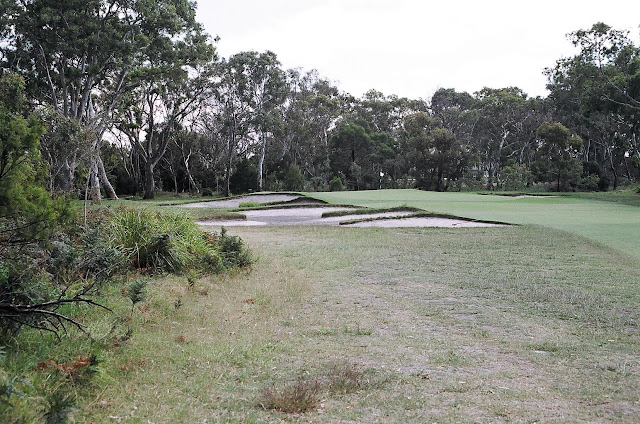Historically, forward tees were labelled as the "ladies tee" which only discouraged men from sticking a tee in the ground between the red markers. This has had the ripple effect of "forcing" junior and senior men to play from too far back, slowing play and decreasing overall enjoyment of the game. Thankfully, this nomenclature is fading away and USGA initiatives like Tee It Forward are popularizing their use amongst men, who are adding years to their golfing life by re-discovering the element of fun.
Forward tees have been used for nearly as long as golf has been played here in North America, but have they been serving those who use them very well? Research suggests that women on average, hit the ball 75% as far as men. Therefore, as a comparative exercise, a golf course with a forward tee yardage of 6,000 yards would be comparable to asking the average male member to play tees set as 8,000 yards. Men would be giving up the game in droves if they were provided no other option, but that is the scenario presented to women at many golf courses. Golf architect Alice Dye has long campaigned for better placement of forward tees and argues for a forward tee yardage of between 4,800 - 5,200 yards (6,400 - 6,933 comparable length for men). Ultimately, we should be able to provide women the option of at least two sets of tee markers by which to enjoy the game.
Yardage is not the only consideration when locating forward tees, the requisite carry must be carefully assessed. Golfers using the forward tees may be beginners or unable to get the ball in the air. It is imperative that forward tees are not located in such a manner that water or long grass occupies the ground between it and the fairway. We need players to finish holes without having to resort to dropping a ball on the other side of a hazard in direct breach of the Rules of Golf. Golf architects need to provide an avenue for shorter hitting players to negotiate the course without impossible carries, playing around rather than over at the expense of an extra shot to reach the green for not taking the risk.
Especially true on holes of the doglegged variety, the angle of the forward tee in relation to the turning point is important. Lessening the angle helps to avoid players being blocked out by trees if they fail to hit the ball far enough, and can lessen the severity of diagonal carries over bunkers or other types of hazard on the inside of the dogleg by providing an easier fairway to hit and hold.
Forward tees must be given the same rigorous design considerations as every other tee, size, sunlight, views, visibility of hazards and target, slope, access and constructed to the same high standard. Golf architects must avoid dumbing things down so much for novice and short-hitting players that they fail to provide for the possibility of exciting shots, as golfers of all ability share in the excitement and thrill of reaping the rewards of successfully challenging an imposing hazard.
Yardage is not the only consideration when locating forward tees, the requisite carry must be carefully assessed. Golfers using the forward tees may be beginners or unable to get the ball in the air. It is imperative that forward tees are not located in such a manner that water or long grass occupies the ground between it and the fairway. We need players to finish holes without having to resort to dropping a ball on the other side of a hazard in direct breach of the Rules of Golf. Golf architects need to provide an avenue for shorter hitting players to negotiate the course without impossible carries, playing around rather than over at the expense of an extra shot to reach the green for not taking the risk.
Especially true on holes of the doglegged variety, the angle of the forward tee in relation to the turning point is important. Lessening the angle helps to avoid players being blocked out by trees if they fail to hit the ball far enough, and can lessen the severity of diagonal carries over bunkers or other types of hazard on the inside of the dogleg by providing an easier fairway to hit and hold.
Forward tees must be given the same rigorous design considerations as every other tee, size, sunlight, views, visibility of hazards and target, slope, access and constructed to the same high standard. Golf architects must avoid dumbing things down so much for novice and short-hitting players that they fail to provide for the possibility of exciting shots, as golfers of all ability share in the excitement and thrill of reaping the rewards of successfully challenging an imposing hazard.
 |
| A rare instance in my travels, the forward tee at Barnbougle Dunes' 16th (designed by Tom Doak) affords the best view from any tee on the hole or perhaps even the property. |























